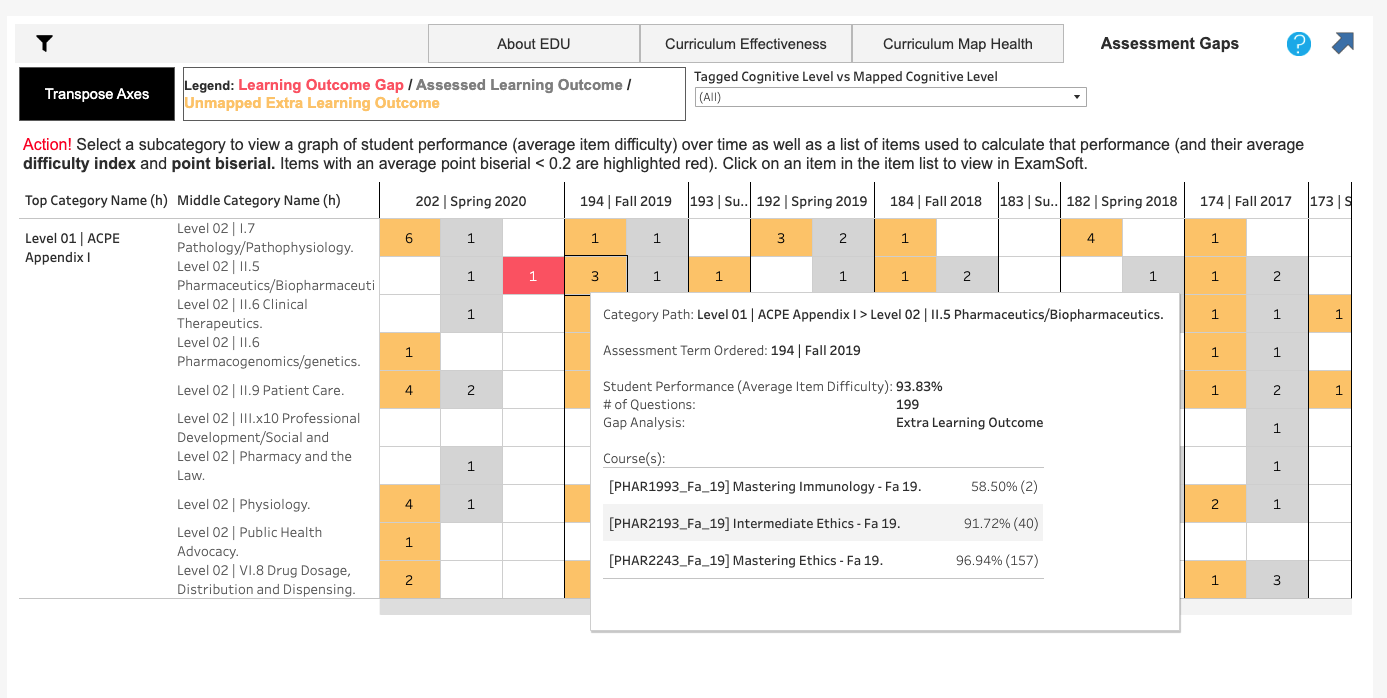
Assessment and Data-Driven Decision-Making in Education
Historically, teaching and assessment in higher education have been an effort based on trial and error. Too often, faculty striving to use innovative teaching methods had to give it the “old college try,” hoping for a successful lesson. Of course, even the definition of a successful lesson wasn’t evident during trial-and-error teaching, not to mention advanced data analytics and data-driven decision-making in education. Educators mainly depended on two types of feedback: student evaluations and observational data, in which teachers likely asked themselves, “How did that go? Did students seem engaged?”
Now that vast amounts of data are readily available, the definition of a successful lesson, course, and program has evolved to focus on improved student performance outcomes. Gathering, evaluating, and using student assessment data is critical to the success of both students and programs. This requires a comprehensive approach to data-driven decision-making in higher education, which includes evaluating the effectiveness of teaching methods and their impact on student performance. The power of data goes beyond informing teaching methods – it can also reveal which educational technology tools are most effective and which content needs to be reviewed for each cohort.
Strategies for building data-driven assessment and capabilities at universities
The advantage of conducting a data-driven assessment of programs, courses, and lessons is that the necessary information is readily available. The primary challenges now are:
- establishing standardized data definitions and storage across the institution,
- centralizing data using a data analytics solution,
- finding ways to automate manual tasks and procedures,
- determining which data to use and how to interpret learning outcomes.
The most complex data analysis in educational assessment and curriculum evaluation is for summative exams. These assessments provide insight into student knowledge and closely resemble the types of questions they will face on licensure exams. This information is crucial in determining whether students are positioned for success and influences data-driven decision-making in educational institutions.
Collecting and analyzing student performance data can be difficult due to the large number of data points. With cohorts of over 100 students per year and two to three exams per course per semester, this can result in overwhelming amounts of data, especially if every question is considered meaningful. Logistically, it can be challenging to sift through all this data and make tangible changes to courses and curriculum.
Data-driven assessment empowers learning outcomes and academic excellence
Centralizing data with the help of analytics and decision support systems in higher education is the most effective and efficient way to access clean, usable data within programs, courses, or institutions. At this stage, the primary aim of assessment in higher education is to reduce the time spent on standardizing and integrating data, allowing educators to concentrate on comprehending student and program performance in real-time and making informed decisions based on data insights. Leveraging data in this way provides significant value for students, faculty, and program performance, as assessments are based on measurable outcomes. Without these all-in-one analytics platforms, the process of aggregating data and creating action plans is manual and time-consuming, taking thousands of hours to complete.
Not only do academics want to evaluate the performance of exams as a whole, but they also need to examine how each question performed and the performance of various content subsets. Student performance on content subsets is crucial to focus on as it enables teachers to give students more specific feedback on their performance, inspiring them to self-evaluate and enhance their learning.

The Curriculum Effectiveness and Gap Analysis dashboard
Evaluating content subsets involves educators tagging exam questions into content-based categories. This not only provides students with information, but also offers educators improved feedback on student performance in specific areas. By using this approach, educators can be proactive in their support for the current cohort rather than making reactive changes after the semester. The feedback gained includes insights into the effectiveness of teaching methods. If students perform well on content taught using a particular method, the teacher can continue using that method with the current cohort. On the other hand, teachers can immediately adjust their approach during the semester if the cohort struggles with a particular teaching method.
The impact of data-driven decision-making in education
Analyzing student assessment data has value beyond improving teaching methods and student performance. (This really seems like a big bonus at this point since those are already such great goals!) By analyzing data across multiple exams and student cohorts, assessment coordinators can make decisions on how to improve the program at an institutional level. Whether it’s tagging questions to teaching methods used or content subsets, collecting and evaluating this data throughout the curriculum provides the information needed for high-level assessment and data-driven decision-making in education.

Assessment Gaps dashboard
Educators can use data to inform teaching method choices in faculty development sessions. They canidentify gaps in content and eliminate redundant material, and assess the impact of edtech tools on student outcomes. By evaluating the use and effectiveness of these tools, they can make data-driven decisions that improve student performance and justify their return on investment.
Improving health profession education through data analysis and decision making
Utilizing such solutions as Enflux to centralize various data points, to create meaningful action plans sets health profession programs up for sustained success. Apart from creating tangible improvement plans, educators can also assign the tasks to the appropriate individuals in the program, creating a transparent process that automates communication. Typically, follow-up on these types of plans can be a slow, confusing, and frustrating situation. However, when there is a tool to do the data aggregation, analysis, and manage the action plans, the process runs smoothly – making it a truly positive influence on programs, courses, and individual lessons, benefitting both faculty and students.
Data analysis and data-driven decision-making are crucial in health professions education, as in most other professional fields today. As higher education institutions collect student performance data, it’s vital to centralize it in a single system to enable administration and faculty to improve the programs through better instruction and provide more valid feedback to students, enabling real-time self-assessment.
Without proper processes, institutions may lag behind peers. By using student assessment data to make decisions that support faculty, they position students for improved learning outcomes, leading to more successful graduates and a more competitive health professions program. Isn’t that the ultimate goal, after all?
Dan Thompson, MEd
Assistant Director of Faculty Development and Instructional DesignOklahoma State University College of Veterinary Medicine

